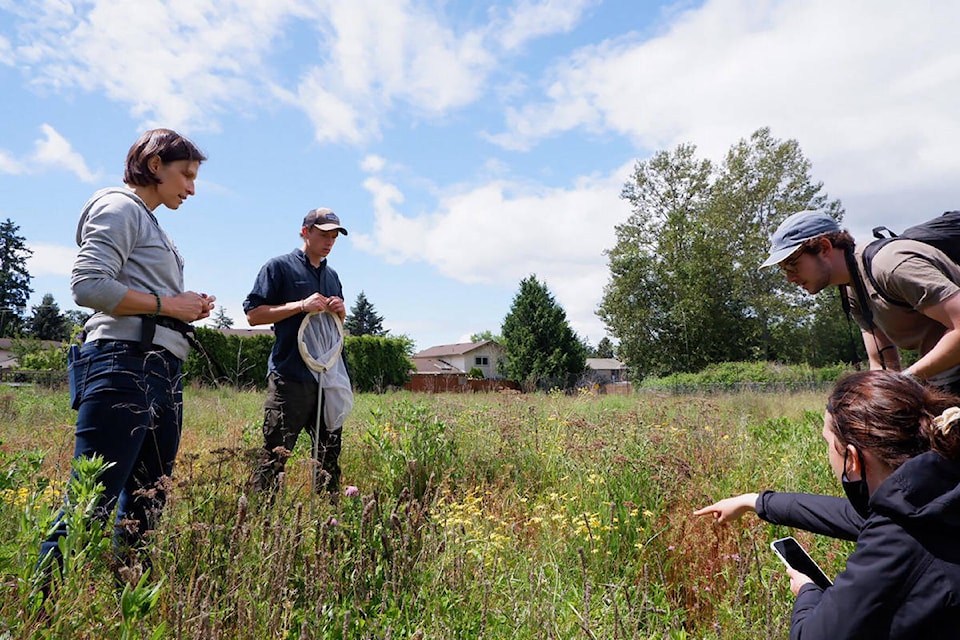Guest writer Thompson Hygge,
Summer intern, Pollinator Partnership Canada
Youth often have unique perspectives on current issues but sometimes don’t have an opportunity to act. I, along with 16 other young people from Greater Victoria, were given a chance to learn about pollinators, and then organize and carry out a pollinator monitoring and outreach project. The program, designed and led by Pollinator Partnership Canada, and named the “Pollinator Leadership Team,” are youth with diverse backgrounds in education and skillsets; some members are in high school and active in environmental clubs and others are engaged in or have completed post-secondary education.
READ MORE: Bringing nature’s bounty to the roadside
After listening to talks from experts in relevant fields and participating in a full day brainstorming workshop, we were let loose with an end goal of supporting the pollinators of our city, through science and outreach. Since many areas of Greater Victoria are filled with non-native ornamental and invasive plants, we decided to see for ourselves how native plants compare in terms of value for native and non-native bees. Native plants have been observed to provide better resources and habitat for native pollinators including bees, birds, butterflies and all sorts of other insects. We have been monitoring the ever-changing flora and fauna of Victoria as spring changed to summer, in hopes of finding some answers.
To help with community involvement and education, the Pollinator Leadership Team has formed connections with local organizations and homeowners to create more pollinator habitat. With increasing native plant area in the city as one of our main goals, we were able to provide and plant some pollinator-friendly native plants with a local community garden. The planting process was a great opportunity to connect with other community members, who stopped by to check out what was going, and some even stayed to help. We have continued to build these relationships to increase community knowledge and appreciation of local pollinators while creating more native habitat.
READ MORE: How choosing food plays into the climate change war
This opportunity has helped my peers and I connect with local conservation efforts, increase our understanding of local plants and pollinators, and provided us with the tools to make a difference. We believe that as youth, we have the potential to make a real impact as our actions can speak loudly on important issues. To follow what we are up to and for general information on local plants and pollinators in Victoria, follow us on Instagram @pollinator.leadership.team. The project was created in partnership with the Royal BC Museum and with funding from the City of Victoria and the Victoria Natural History Society.
Thompson Hygge is a summer intern with Pollinator Partnership Canada.
